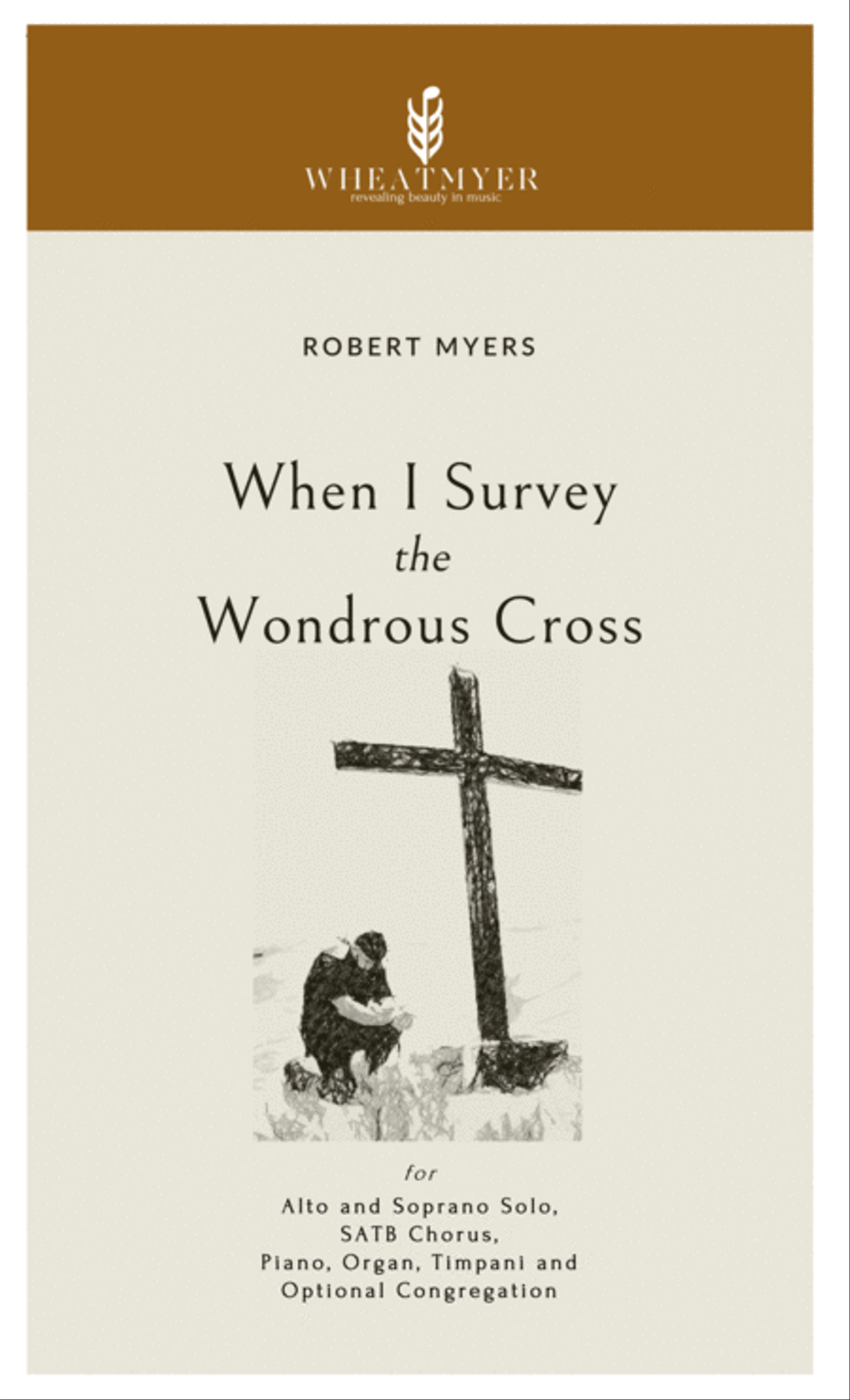Chamber Orchestra - Level 3 - Digital Download SKU: A0.976713 Composed by Isaac Watts / Lowell Mason. Arranged by Robert Myers. Christian,Holiday,Love,Sacred. Score and parts. 49 pages. WheatMyer Music #4775721. Published by WheatMyer Music (A0.976713). When I Survey the Wondrous Cross, written by the Father of English Hymnody, Isaac Watts, in 1707 and later matched with Lowell Masonâs 1824 tune, HAMBURG, has long stood at the forefront of English hymnody.This arrangement, taken from my Passion Week cantata, Wounded, Bleeding, Still Proceeding, allows the full talent-spectrum of the Body of Christ to contemplate His sacrifice and offer their devotion.The first two stanzas feature an alto/soprano duet, set in a minor key with frequent diminished and augmented chords to reflect the despair and loss of a witness to the crucifixion. The entire third stanza, set for SATB chorus, never really moves off the F minor tonic until the end. That, and the relentless pounding of the bass line, ponders the witnesses' anguish and our vicarious experience of it through Scripture. So, sing these stanzas sadly â they are sad! When the choir enters, be sure to observe the swelling crescendos/diminuendos as the sorrow and love mingle together.The fourth stanza offers optional congregational participation and may be used to provide a responsorial to the Word of God or a preparation for the Table. The choir sings this stanza in four part harmony as the congregation joins on the melody. It stays in a major key and closely follows the traditional consonances used in Lowell Masonâs harmonization; thus, the choral parts will feel familiar and the congregational melody will flow naturally. Take the text literally (Love so amazing, so divine, demands my soul, my life, my all.) and sing it firmly, enthusiastically, passionately, but never triumphantly. Sing it as a song of personal devotion to commit all that you have, all that you are, and all that you will ever be, to the one who humbled Himself by becoming obedient to the point of death, even death on a cross (Phil 2:8b) so that we might become the righteousness of God in Him (2 Cor 5:21)The music is well within the grasp of any ensemble competent with traditional SATB anthems. The instrumental accompaniments are straightforward yet very colorful, suitable for high school or higher level players. When I Survey the Wondrous Cross is an unapologetic Christian worship anthem suitable for sacred services, yet it does not compromise on artistic expression.This is the orchestral accompaniment for the choral octavo version sold separately. This version includes full score and all instrumental parts.
